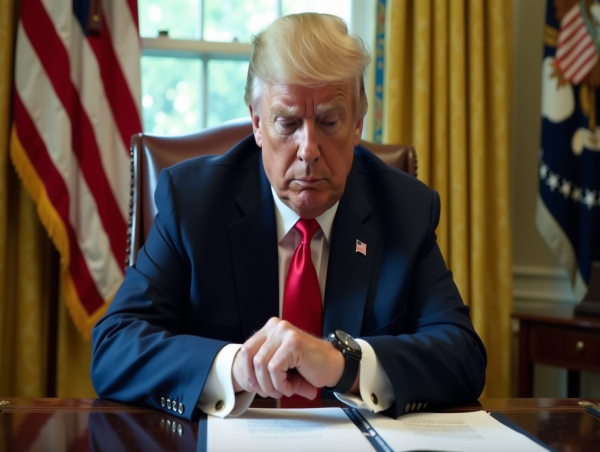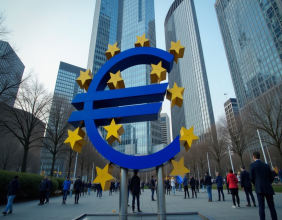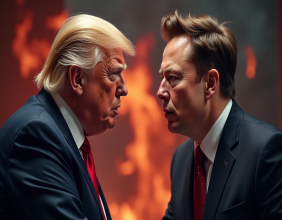The clock is ticking down on what could be a defining moment for transatlantic trade.
In a high-stakes gambit, the European Union is signaling it might be willing to swallow a bitter pill—a 10% universal tariff on many of its exports to the United States—but only if it can extract crucial concessions from the Trump administration.
With a deadline of July 9 looming, the two economic superpowers are locked in a tense negotiation to avert a trade war that could send shockwaves through the global economy.
Europe’s calculated risk
Behind closed doors, a potential pathway to a deal is taking shape.
According to a report in Bloomberg that cited people familiar with the delicate negotiations, the EU’s play is to accept the baseline 10% tariff but carve out vital protections for its most critical industries.
Brussels is pushing hard for lower rates on key sectors like pharmaceuticals, alcohol, semiconductors, and commercial aircraft.
Furthermore, they are demanding quotas and exemptions to blunt the severe impact of Washington’s existing 25% tariff on automobiles and its crushing 50% tariff on steel and aluminum.
Sources, who spoke on the condition of anonymity to Bloomberg, describe the proposed arrangement as one that still tilts in America’s favor.
Yet, it’s a compromise the European Commission, the EU’s trade authority, believes it could ultimately live with—a pragmatic choice in the face of a far worse alternative.
That alternative is a scenario where, come July 9, President Donald Trump makes good on his threat to slap tariffs of up to 50% on nearly all of the bloc’s exports to the US.
President Trump has made these tariffs the centerpiece of his economic doctrine, arguing they are necessary to resurrect American manufacturing, fund his tax-cut agenda, and punish countries he claims have taken advantage of the US.
Growing list of Donald Trump’s trade tariff cases

(Source: Bloomberg)
The sheer gravity of the situation was reflected in the market’s knee-jerk reaction to reports of these talks; the S&P 500 briefly stumbled, losing 12 points in seconds before recovering, a testament to the anxiety rippling through Wall Street.
The numbers at stake are staggering. In 2024 alone, the EU shipped €52.8 billion ($62.2 billion) worth of cars and auto parts to the US, its single largest export destination.
The bloc also sent €24 billion in steel and aluminum, primarily from industrial powerhouses Germany, Italy, and France.
A full-blown trade war would put all of this, and much more, in jeopardy.
EU’s trade chief Sefcovic’s mission to Washington
Despite the high tension, a fragile optimism persists. There is a growing belief on both sides of the Atlantic that an interim agreement, a sort of temporary truce, can be hammered out before the deadline.
This would pause the immediate tariff threat and allow the complex negotiations to continue.
To that end, the EU’s trade chief, Maros Sefcovic, is leading a delegation to Washington this week in a crucial, last-ditch effort to find common ground.
The a-la-carte deal would be complex, likely covering not just tariffs but also non-tariff barriers, strategic purchases of key US goods like liquefied natural gas (LNG), and frameworks for cooperation on economic security.
But even if an “agreement in principle” is reached, a cloud of uncertainty will remain, as officials have been unable to specify how long such an interim deal would last.
Four Sscenarios and a retaliation arsenal
The European Commission has been candid with its member states about the endgame, outlining four potential scenarios:
- a deal is struck with an “acceptable level of asymmetry”
- the US presents an unbalanced offer that the EU is forced to reject;
- the deadline is extended, buying more time for talks; or
- President Trump walks away from the table entirely and unleashes the tariff storm.
The last scenario is the one that keeps policymakers in Brussels awake at night. If talks collapse, officials have made it clear that the EU is prepared to retaliate with its full arsenal of countermeasures.
The bloc has already approved tariffs on €21 billion of US goods, ready to be deployed at a moment’s notice.
This list is surgically precise, targeting politically sensitive American states and iconic products: soybeans from Louisiana (home to House Speaker Mike Johnson), agricultural goods, poultry, and motorcycles.
And that’s just the opening salvo.
An additional, more punishing list targeting €95 billion of American products has also been prepared. This would hit major industrial goods, including Boeing Co. aircraft, US-made cars, and American bourbon.
Beyond tariffs, the EU is exploring more creative and painful measures, such as export controls and restrictions on US firms’ access to lucrative public procurement contracts.
As the high-stakes negotiation enters its final, critical phase, the world watches to see if diplomacy will prevail or if two of the world’s largest trading partners are about to step off the economic cliff together.
The post Europe gambles on a high-stakes trade deal to avert Trump's tariff hammer appeared first on Invezz





